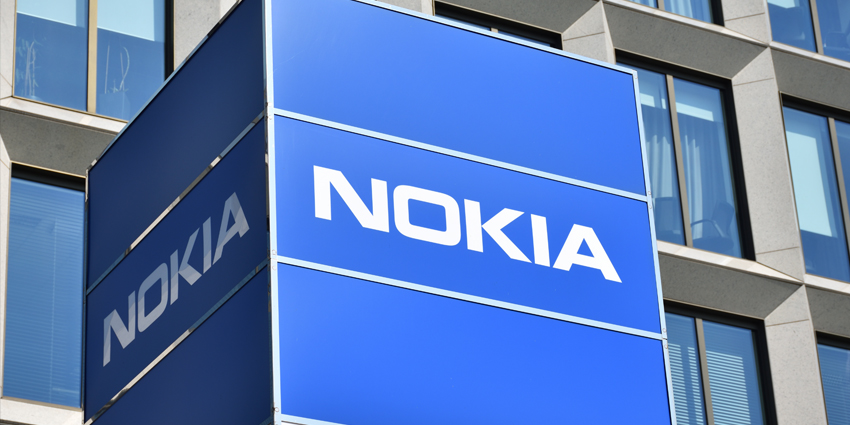Global property and architectural firms have increasingly turned to using virtual, augmented, and mixed reality (VR/AR/MR) solutions as the construction industry returns to normality post-COVID-19.
The emerging technologies have empowered such firms to design 3D architectural plans, saving immense amounts of time and money, while expanding marketing services to global customers who can view the designs in real-time as off-the-plan, meaning prior to the building’s on-site construction.
XR Today spoke with Michael Shaw, Founder and Managing Director of EnvisionVR and Amy Farrington, EnvisionVR’s Head of Sales and Marketing, on the rise of these solutions for the Australian and global building industry over the last three years of the company’s development.
XR Today: What was the reason for designing your property viewing solution, and what initial problems did they attempt to resolve in the property market?
Michael Shaw: The initial problem I saw was there was really a struggle for people to sell off-the-plan properties and understand what they were buying from them.
We have a few companies in Australia that test and play with the idea of projecting 2D images into large spaces so you could walk around your floor plan before it’s built, and identified it could be done a lot better using VR and AR.
Since then, we’ve developed the technology for mobile experiences so anyone can easily use it, and we’ve created a backend business to help many communities produce those experience for a reasonable price.
Amy Farrington: Essentially, we saw there was a real need in the market to help people translate 2D floor plans into reality, no pun intended, but a lot of people found it really difficult to look at a 2D floor plan and know what it would look like after it was finished.
We see it’s one of the biggest hesitancies people have when buying off-the-plan, which links to our target markets, which are off-the-plan developers and home builders selling properties that haven’t been built yet, and these people have the issue with visualising what the properties will look like.
We later went on this journey and spoke with a lot of our target market, who provided us feedback, and we began to hear what theirs and our customers’ problems were, over the last two years to incorporate into our tech.
Our solution has developed a lot over the years from feedback, and what we initially thought was this great solution has now developed a lot after receiving that valuable market feedback.
XR Today: Can you describe the process of viewing, designing, and uploading properties to the system? How does it compare with traditional viewings or architectural builds?
Amy Farrington: When using a display home builder who builds similar houses over and over again, if you start looking at traditional processes, a lot of times a customer will go into a display village to have a look at the houses under construction and choose the one they like.
They’ll go “Great, I want to build with you,” but may have the issue of, “Oh, we don’t have a physically-built [model] so you can’t see it”.
That’s where they bring out static images, brochures, and 2D floor plans to decipher, but with our technologies, we’ve really empowered customers to choose how they want buyers to view properties.
We give them three options, and when we first started, we initially only used VR and were very much about headsets, but along our journey, we’ve incorporated tablets, AR, and others along with more traditional, clickable tours.
We have something for every buyer, depending on how comfortable they are with using the technology. A buyer could visit our platform, go to your homes site, and look at all of your different designs.
As a customer, I can choose how I want to view them or how to view it as a clickable tour on my tablet, use the same tablet to view any one-to-one scale in AR, or pop a headset on and view it in VR.
So really, the power’s now in the buyer’s hands to choose how they want to view houses or buy them.
Michael Shaw: We’ve also tried to make our solution fit into the sales process as must as possible, and through these three avenues Amy described, that gives our sales team the opportunity to sell how they want.
They can use this in the display suite as a face-to-face physical tool to entice buyers and let them fully experience a property, or it can be used as a remote selling tool for selling agents, who can digitally link up with buyers to walk around a virtual home tour.
Finally, buyers can view [properties] in their own time and space, just with their family and friends. We’re trying to facilitate communication between buyers and sellers and make sure there is correct information flowing between the two parties, so they’re pretty great decisions.
That also really solved new problems, which were COVID-19 [lockdown] restrictions and not being able to physically be in the same space.
We started this business in COVID-19, but it wasn’t our intention the pandemic would be a problem we’d have to solve. It’s been a silver lining and added value to connect people from around the world, in any location, to conduct sales.
XR Today: What is your company’s predominent client base, and what kind of feedback have they offered about your solution?
Amy Farrington: Regarding plan developers, mostly we’ve found here that they’re developing residential apartment buildings. Then we’ve got projects or display home builders, depending on how you refer to them.
When we first started, our solution was completely different. As with all startups, you begin with a product based on market estimations and then begin talking to [clients] who explain what they want.
This was difficult because you get a lot of feedback which you [have to sort through] and find, “Oh, it’s not what I thought and we’ve got to change it,” but we really listened to [clients] and heard their issues.
For display home builders, their need is to show the same design over and over again, so they may have over 100 different designs, but only five of them are built as a physical display home.
For them, it’s really about how they can show full suite designs to as many people as possible while reducing costs, and as you can imagine, in Sydney alone, you’re trying to build a display home and a block of land under $1 million AUD, which is pretty hard to do and an expensive exercise.
I think we are very cost-effective there and with plan developers, they’re a little bit different. They’re not showing the same designs for a long period of time, but are trying to show their key apartments they’re trying to sell, like a one-bedroom, a three-bedroom, or a penthouse, the exterior of buildings, and common areas as well, which we can model and display in virtual reality.
We can also add 4K drone footage into our experience, so when a customer views the design, they see their actual physical view. For them, that’s something they can’t show people in any other way, which is really powerful and a big selling feature that solves a big problem for them, especially in Sydney.
Michael Shaw: She’s perfectly correct as [we focus on] the end client and our end user, but what’s also a part of our business is partnering with as many architectural visualisation firms as possible.
I’m describing the end users of our tool, but to get that product, a lot of those clients already use architectural visualisation firms to produce high-end imagery and fly-through drone videos.
What we do is provide that extra ability for those firms to offer virtual reality on mobile devices, and we specialise in that conversion of making high-end models that work in VR.
We’re not necessarily device-agnostic, but you can get it across tablets, smartphones, and anything that can provide the maximum amount of versatility for anyone who wants to view the properties.
Amy Farrington: Regarding what Mike said, those visualisation firms are referred to as archivist firms, which are quite abundant and have traditionally been used to sell off-the-plan properties by making 3D rendered, fly-through videos. It’s a no brainer for them, because they already do modelling, and this is just a great add-on service for them to provide to their clients.
XR Today: Are you familiar with any of the specific technologies used to design or develop the properties, such as stereoscopic cameras or specific [3D modelling platforms]?
Amy Farrington: As mentioned before, our goal is to partner with archivist firms, so we don’t intend to provide or produce these models, but have numerous platforms commonly used in the industry.
What we focused on initially was 3DS Max, an Autodesk product, which we believe is used by the majority of archivist companies, but will expand into Lumion and others, as well as Blender.
We are trying to expand across all platforms to assist those architectural visualisation firms creating the full 3D model and visual images from that, but our product focuses on the full rendered experience.
Michael Shaw: I would like to mention our company bases its model off Matterport, who are doing 360-degree cylindrical images to create tours and are advancing to create actual models of real spaces.
Ours differs in that we’re doing off-the-plan properties, which does not use those technologies in that specific form as the actual property doesn’t exist, so we’re creating a more user-friendly and immersive experience for viewing properties.
XR Today: Is there anything else you would like to add about your product, namely how COVID-19 has affected business or what the direction you believe these products will go in the future?
Michael Shaw: Regarding the future, I definitely see this as being the new way of selling property as it’s a lot more convenient, and when this type of technology is adopted more commonly, it would just make more sense in terms of time and efficiency to view properties through our platform.
You can view things in states as well as off-the-plan, and this seems to be the way people will sell properties along with traditional methods, but not just exclusively one or the other.
It will just take time, and with big tech companies such as Facebook, Apple, and Microsoft getting into this field with the launch of new headsets next year, marketing and sales will go behind that.
Just as it’s taken a few years to adopt and widely use smartphones such as the iPhone, this is the exact same experience that is taking place with VR headsets and AR technology, and we’re just at the start it.
This is just the tip of the iceberg, and yes, there are exciting times ahead.
Amy Farrington: That’s what we’ve found when we first started with headsets as an option. There’s a bit of hesitancy with people using headsets, and that’s why we really began speaking to the team to determine we needed to create an alternative for people, which is still a great experience and gives them the same immersion into that design, but for people who don’t want to wear headsets.
That’s really the reality of it, and I think that people will become more and more comfortable with AR and VR, and as you use a set of smart glasses and Windows, that basically becomes your mobile, headset, tablet, and everything else rolled into one.
It will be interesting to see how technologies develop over the next five to ten years, which will be exciting but also a bit scary for some people, but I’m looking forward to it.
For more information, kindly visit EnvisionVR’s website. Visitors can also download the EnvisionVR app on the Apple and Android app stores.







